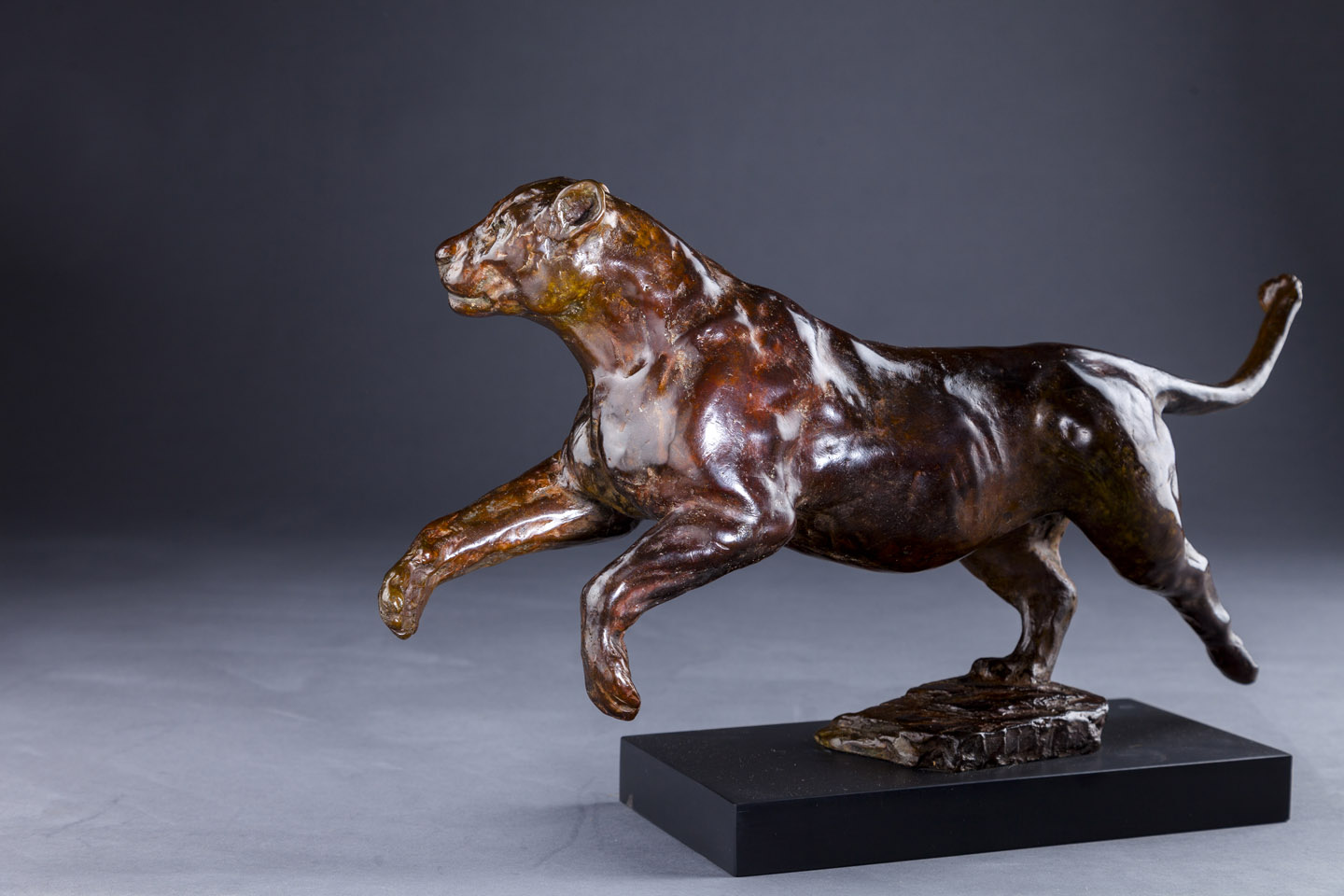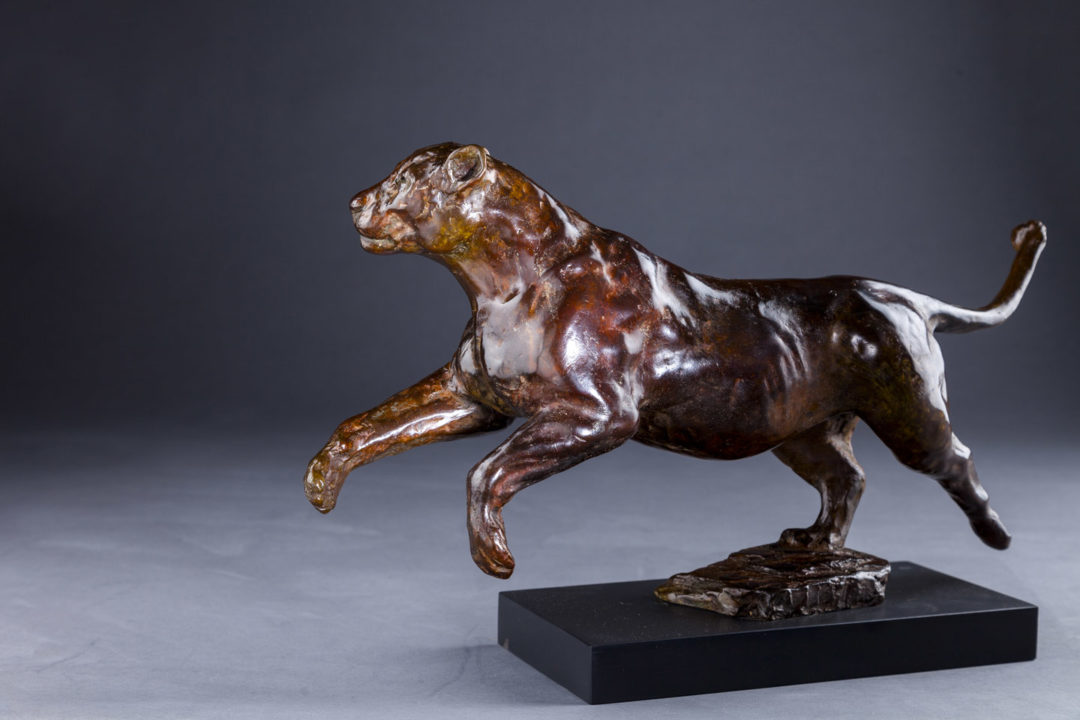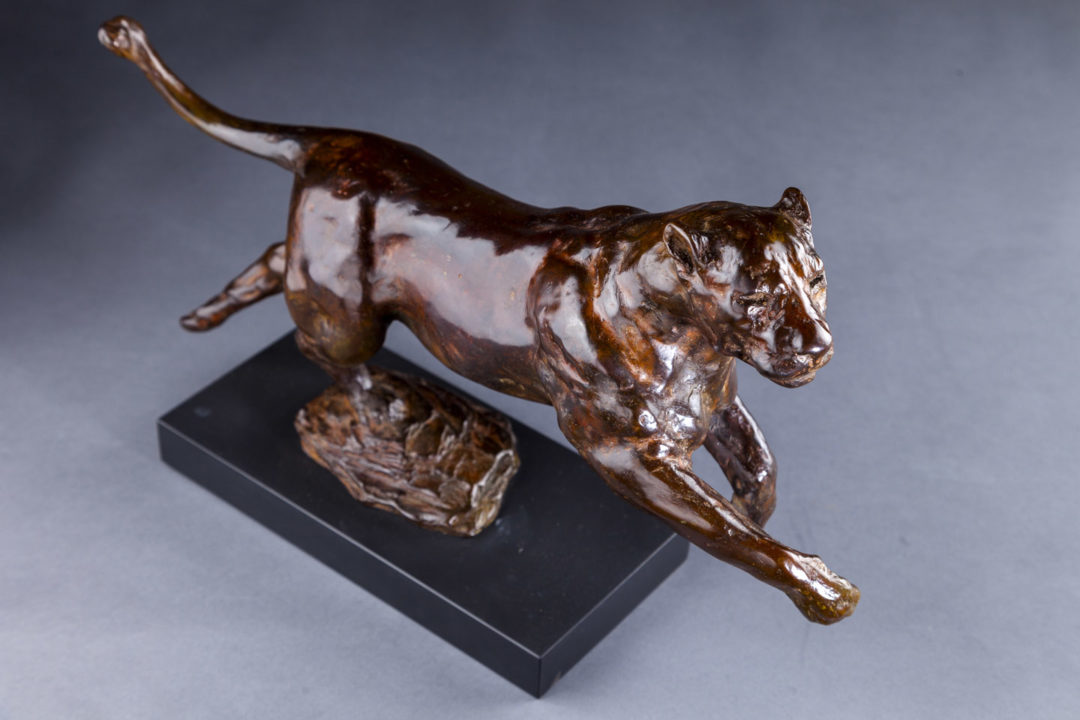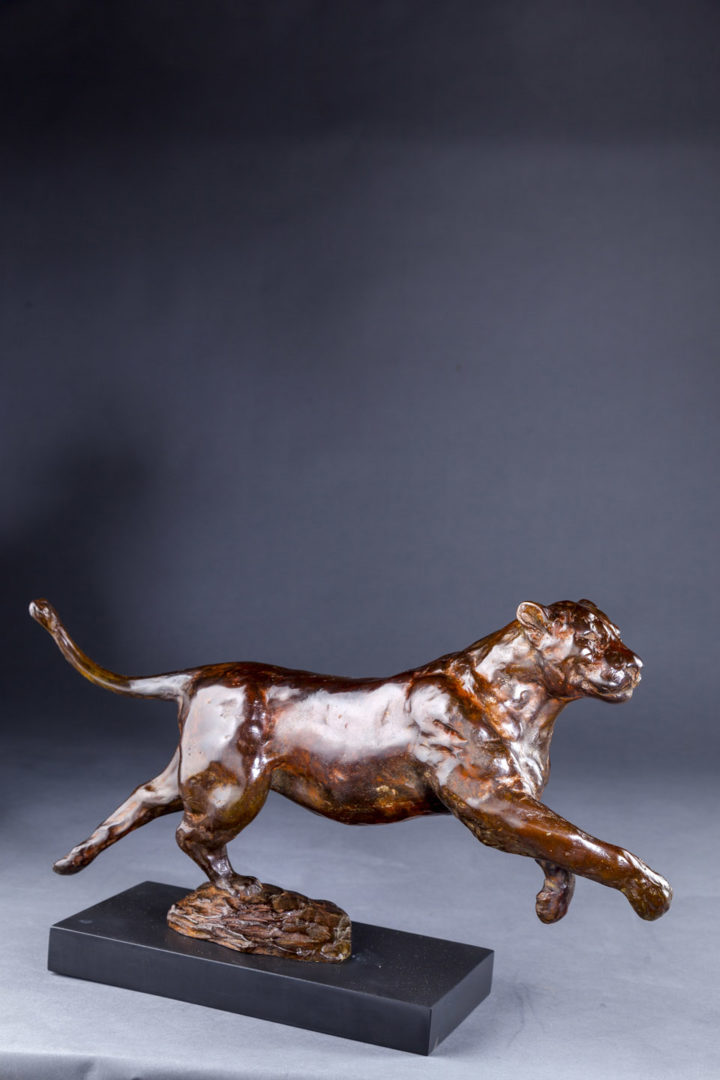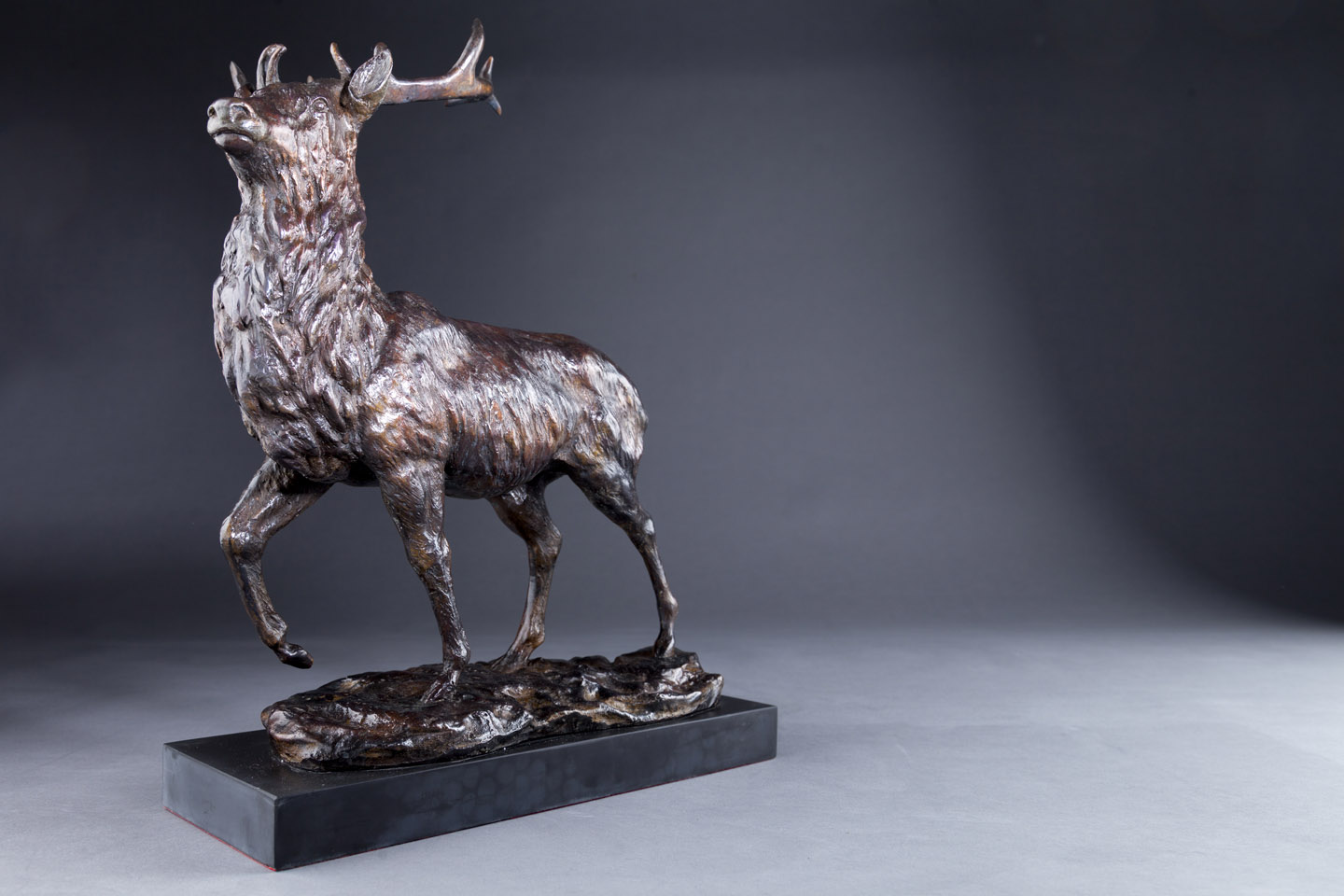Piece Highlight: Lioness
One of the most widely recognised animal symbols in human culture, the lion has been extensively depicted in various artforms, on national flags, and in contemporary films and literature. It appeared as a symbol for strength and nobility in cultures across Europe, Asia and Africa. The lion has been depicted as “king of the jungle” and “king of beasts”, and thus became a popular symbol for royalty and stateliness.
The lion prefers grassy plains and savannahs, scrub bordering rivers and open woodlands with bushes. It is absent from rainforest and rarely enters closed forest. In Eurasia, the lion once ranged from Greece to India; Herodotus reported that lions had been common in Greece in 480 BC but today it has been reduced to fragmented populations in Sub-Saharan Africa and one critically endangered population in western India.
Sculpted in 2009 by Sally in a limited edition of 8. For more details see the Lioness art-work page or click here. For inquiries contact Sally now or click here.
Piece Highlight: Highland Stag
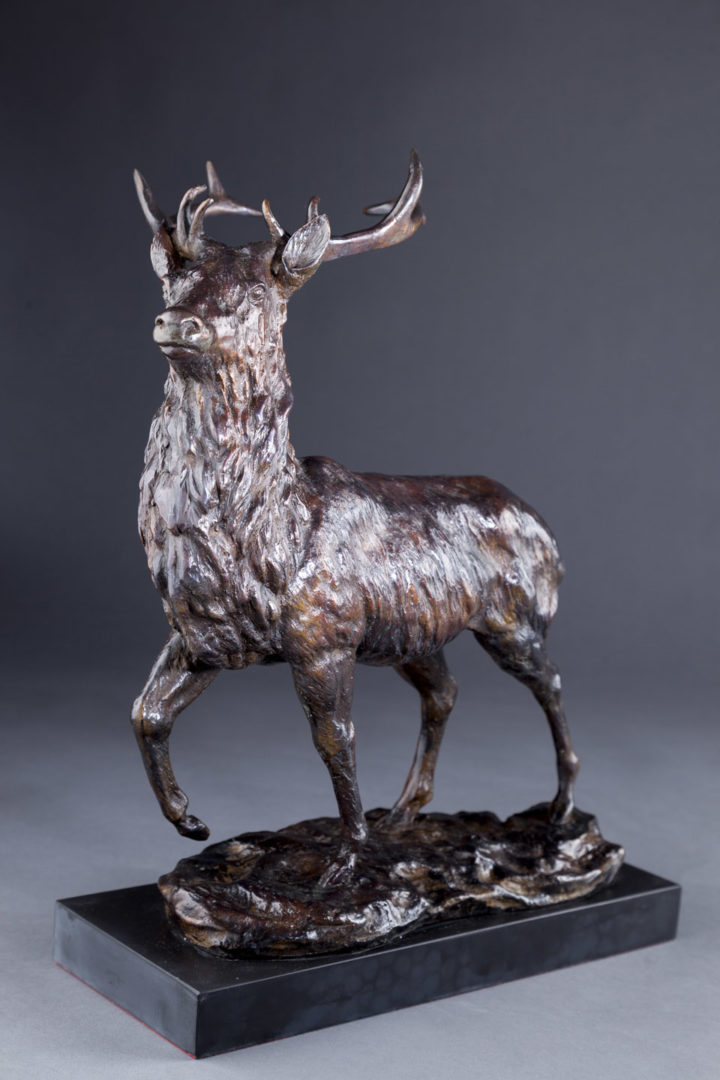
The Highland Stag is a subspecies of Red Deer native to Great Britain. This deer is slightly smaller than other Western European red deer. In summer, the coat is lighter in colour with a distinct border to the lighter patch on the rump. The rest of the colour is dark reddish brown with a greyer face and neck. The legs are blackish brown. In winter the animal grows long hair on the neck. The brow and the bez tines of the antler are usually close together and at a distance above the burr.
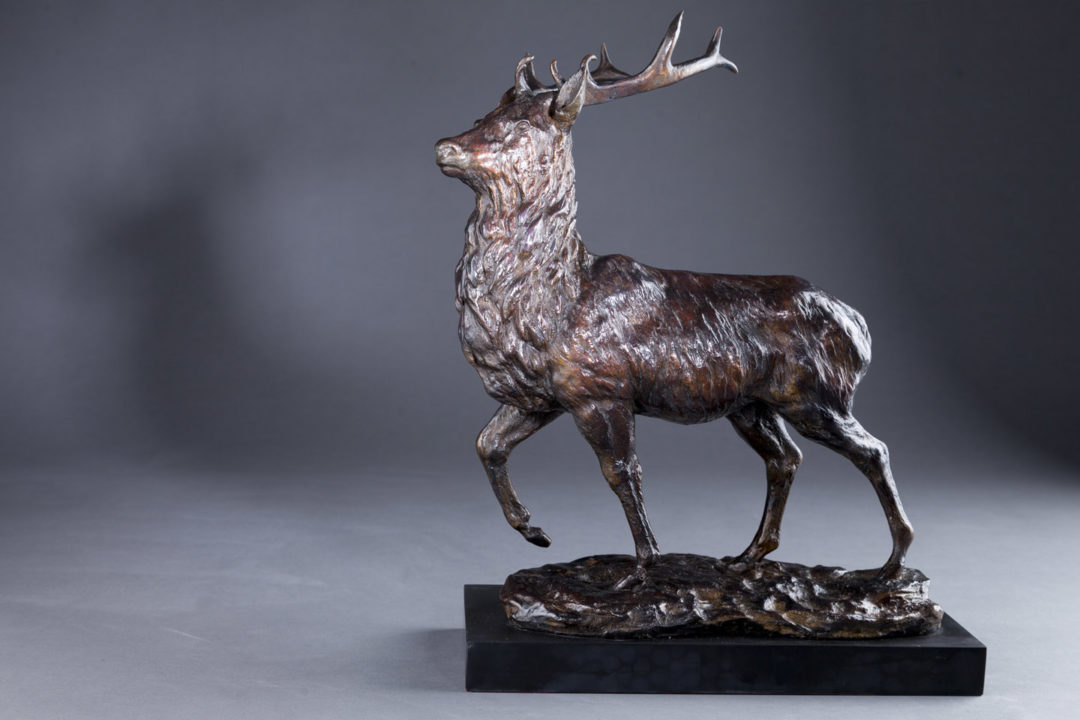
This deer thrives in the Highlands and Islands of Scotland and in parts of England such as Westmorland, Devon, Somerset, Wiltshire and the New Forest. It is also found in County Kerry and Donegal in Ireland. However, most of the red deer kept in parks in the British Isles are derived from the larger subspecies brought from the European mainland, the Western European Red Deer.
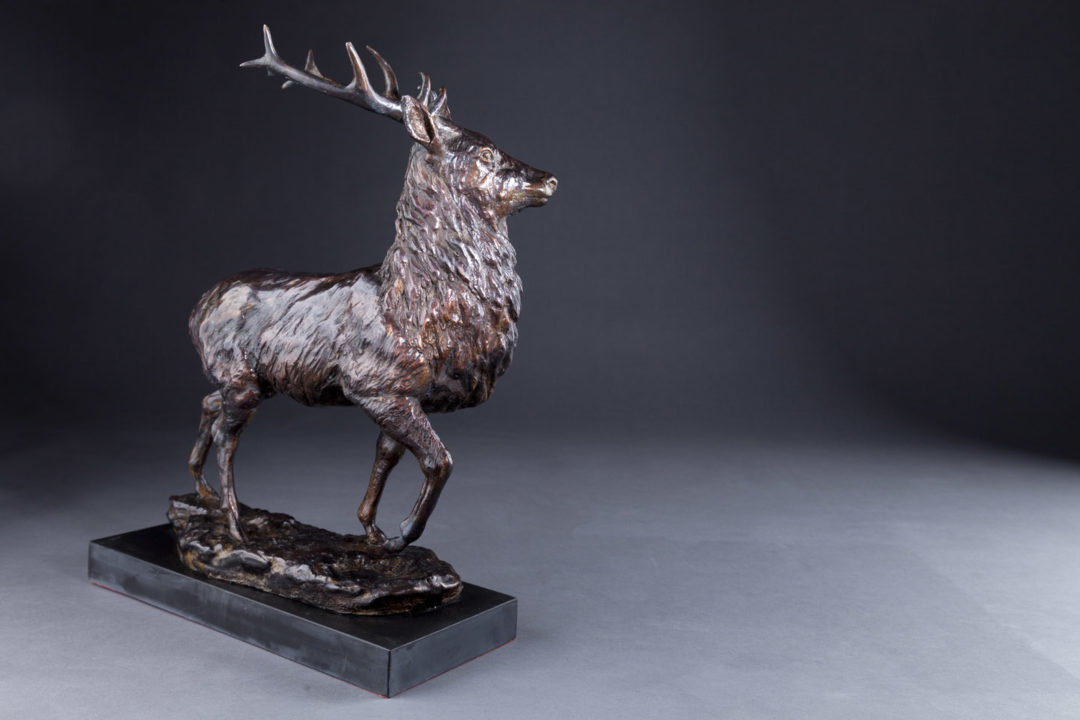
Although mostly found in the north of Scotland, there are reports of deer being spotted in the Borders.
Sculpted in 2003 by Sally in a limited edition of 8. For more details see the Highland Stag art-work page or contact Sally now or click here.
Piece Highlight: Cheetah
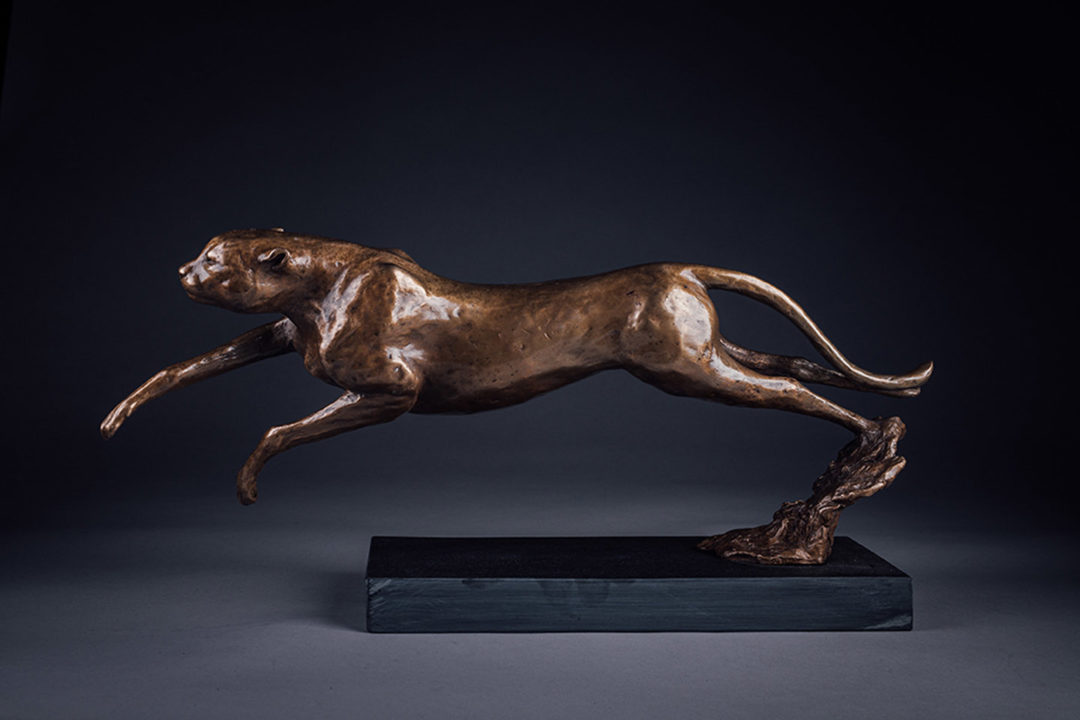
The Cheetah is the fastest land animal on the planet. Achieving speeds of upto 64 km/h (40 mph) while hunting but are capable of accelerating up to 112 km/h (70 mph).
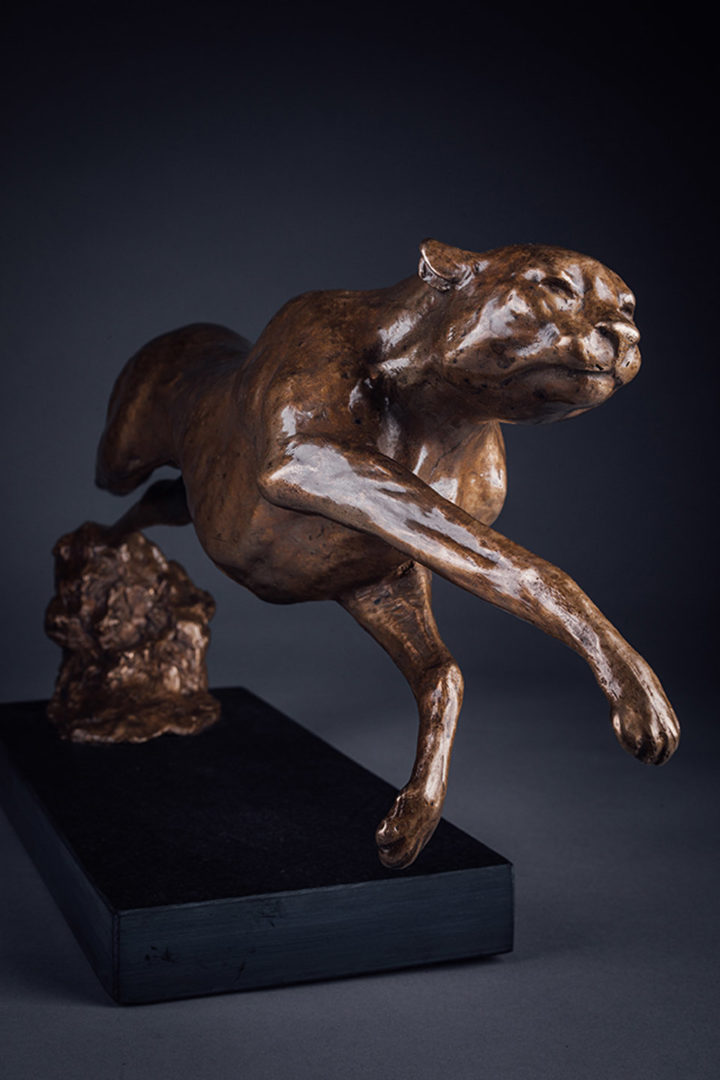
The cheetah is threatened by habitat loss through agricultural and industrial expansion; moreover, the species apparently requires a large area to live in as indicated by its low population densities. It appears to be less capable of coexisting with humans than the leopard. Human interference disturbs hunting and feeding of cheetah. With 76% of its range consisting of unprotected land, the cheetah is often targeted by farmers and pastoralists who attempt to protect their livestock. However, cheetah is not known to prey on livestock.
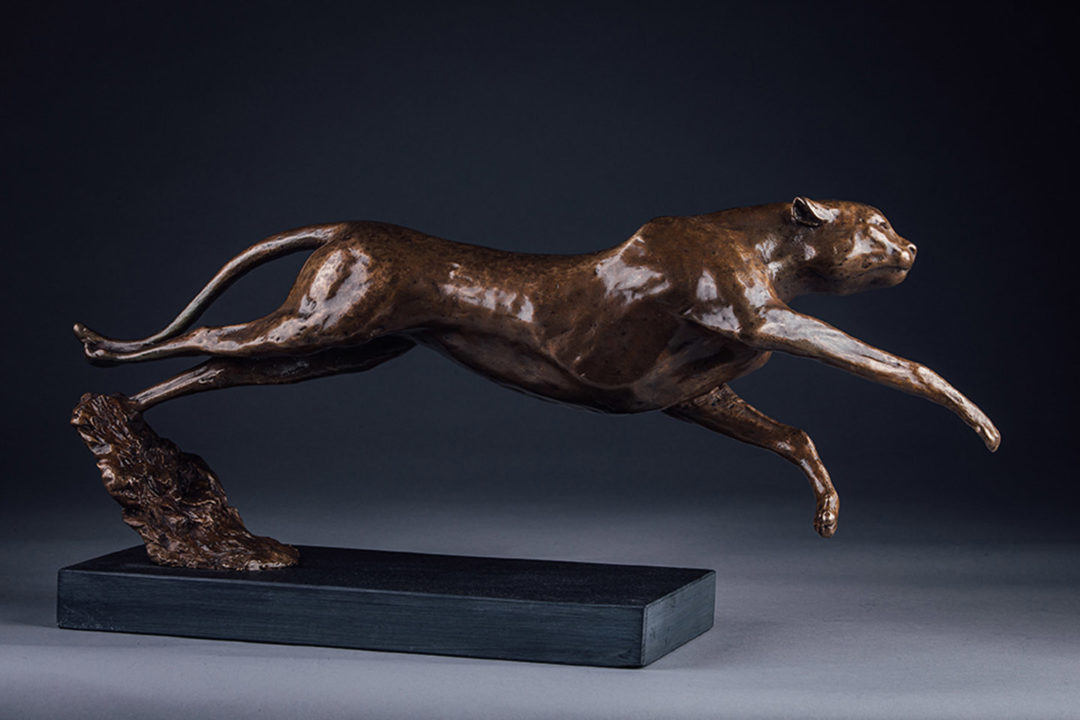
In 2016, it was estimated that there are just 7,100 cheetahs remaining in the wild, and simulation modelling suggested that they are at risk of extinction.
Sculpted in 2019 by Sally in a limited edition of 8. For more details see the Cheetah art-work page or contact Sally now or click here.
